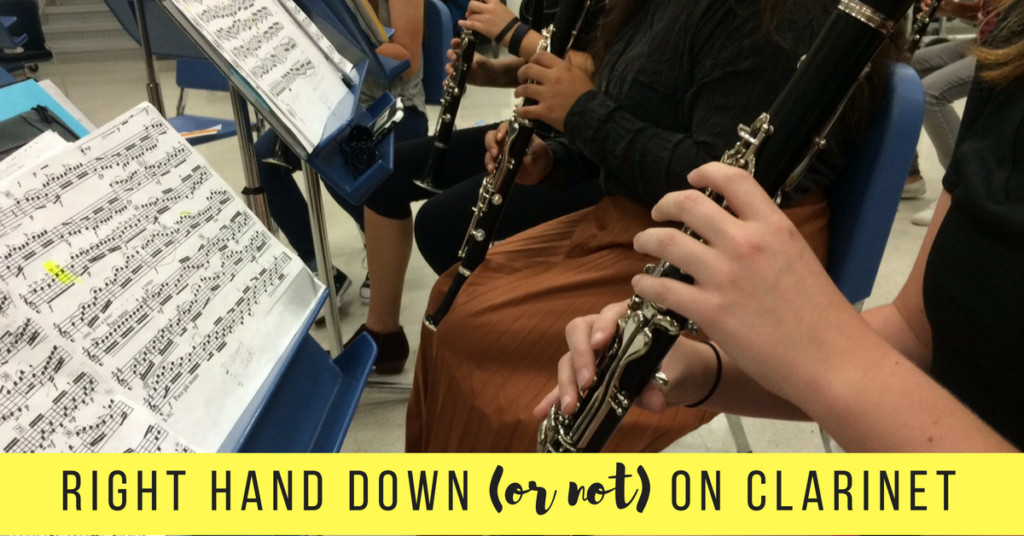Right Hand Down (or not) on Clarinet
by Tamarie Sayger
Date Posted: December 20, 2016

Originally published to CrossingTheBreak Blog
Clarinet teaching has a number of controversial subjects – and this is one of them. Hopefully, this post will help you look at both sides and come up with your own decision of how you want to teach this. Most importantly, you’ll know WHY you choose to teach it the way you do.
What is “Right hand down?”
In general it means that on throat tones (G, G#, A, Bb in the middle of the staff) clarinet players can put down some or all of the fingers in the right hand.
Reasons TO put down the right hand?
- For Pitch
- For Resonance (Tone)
- For Technique
Reasons NOT to put down the right hand?
- As a crutch (to help hold the instrument)
- It often causes you to break the "Law of Minimal Motion" in technical passages
Pitch/Resonance
Throat tones – G#, A & Bb – can be bad notes on clarinet. Some instruments are worse than others, but most of the time if a young clarinet player plays those notes with a decent embouchure, they are still gross. They are often sharp (sometimes very sharp!) and the Bb specifically has a thin, pinched tone. What makes it worse is that they are very common notes on clarinet and are often prominent in repertoire for young bands.
One more consideration is that the notes A & Bb are often right next to a B or C right above which are much more stable, resonant notes – making the discrepancy even more noticeable.
Technique
Keeping the right hand down in some passages can help greatly with technique, especially in what people call “Crossing the Break” or going from ‘no fingers to all fingers’ type fingerings. It can eliminate many unnecessary finger movements and help facilitate smoother transitions from throat tones to notes like B, C, or D.
As a Crutch
The biggest reason to not teach right hand down is that it can provide a crutch to beginners. I think some teachers do it the first few weeks of school to help stabilize the instrument when students are learning open G. However, this often results in students feeling that every G they ever play must have the right hand down. This can create huge technical problems later and if you include the right pinky in the fingering, it can create major pinky problems later as well. The right pinky must be free to move to all 4 pinky keys easily, not locked into the home position.
It can also be a crutch that keeps student from ever truly crossing the break smoothly. Although most advanced clarinetists tend to add fingers early sometimes when going from a throat tone to a higher note, I think most would also tell you they don’t have to add them. If students don’t learn how to just put down all the fingers and have the note come out, it can become a technical and musical problem down the line.
"Law of Minimal Motion"
When students are taught that the fingering for open G is 4, 5, 6, R Pinky, they have a hard time breaking that habit when they advance enough to realize that’s really not true. So a student that has a fast DEFGFED type pattern all in the left hand will put down the right hand on the G, involving 8 finger motions and an entire hand that have no business being involved. That pattern is a simplified example, but this is one of the habits I have had the hardest time getting high school students to fix. The most difficult cases can cause hundreds of extra finger motions in their all-state music because they want to put down their right hand on every throat tone. Read more on the “Law of Minimal Motion.”